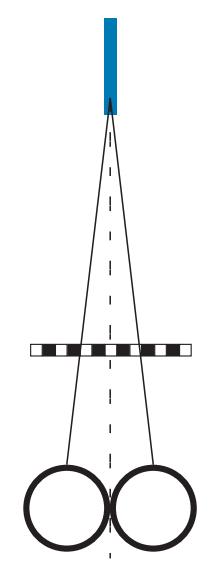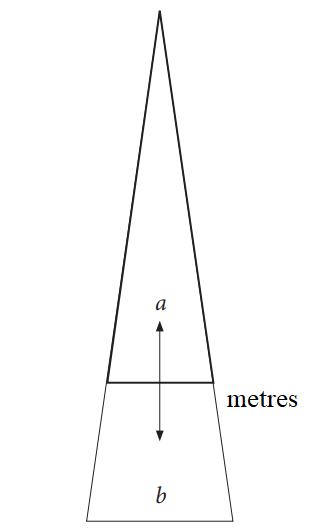Practical Exercise 1: PARALLAX
The described activity should introduce the concept of parallax to pupils and its use to measure distances.
Aids:
• a suitable distant object (tree, lamppost, etc.),
• two hula-hoops (or two other aids to mark the two points from which the observation is done),
• length measuring tool (e. g. long wooden metre),
• table or laboratory stand, tape measure.
1. Assemble the system as shown. The centre of the wooden metre must be in the axis of the hoops and the distant object whose distance we want to measure and it must be at a suitable height, so that the object can be seen behind it (e. g. on a table or in a stand). The distance of the table with the metre and the hoops should be two metres.

Figure 3 The system
2. Depending on how high the metre is, stand or sit in the left hoop and write down behind what number on the metre you see the distant object.
3. Repeat the same when looking from the right hoop.
4. Then move the table with the metre two metres closer to the object (measure the distance with the tape measure).
5. Repeat the measuring in points 2 and 3 and write all the results in the table:
| Distance of the close object (coffee table with metre) |
The number on the metre that overlaps with the distant object ON THE LEFT |
The number on the metre that overlaps with the distant object ON THE RIGHT |
| 2 metres | ||
| 4 metres |
From the values in the table, calculate the bases of triangles a and b according to the figure and determine the distance of the observed object:

Figure 4
Subsequently, pupils should answer the following questions:
a) What is the relationship between the distance of the object and the apparent change of position when viewed from a different perspective?
b) Where and how is this method used in astronomy?


